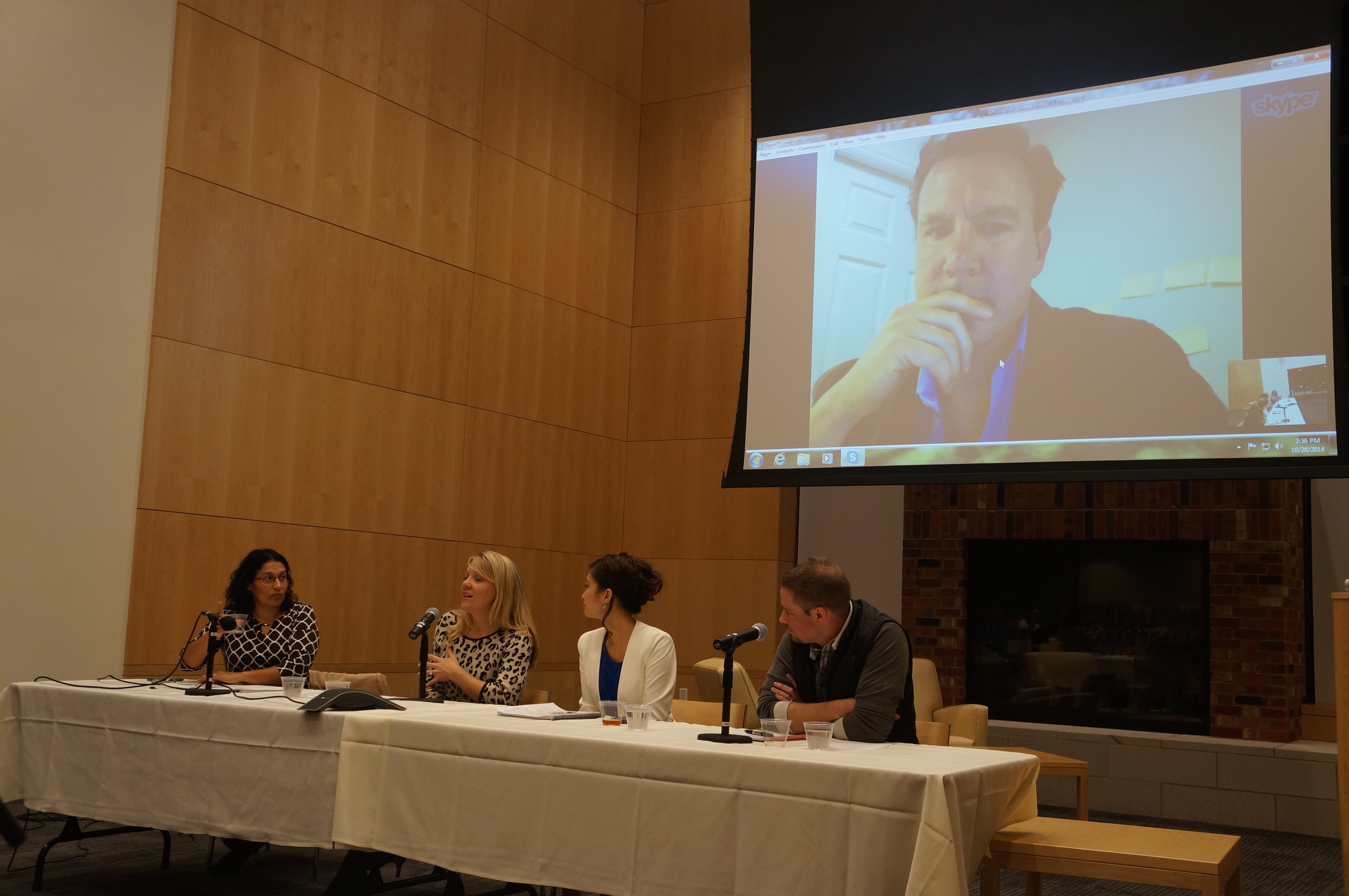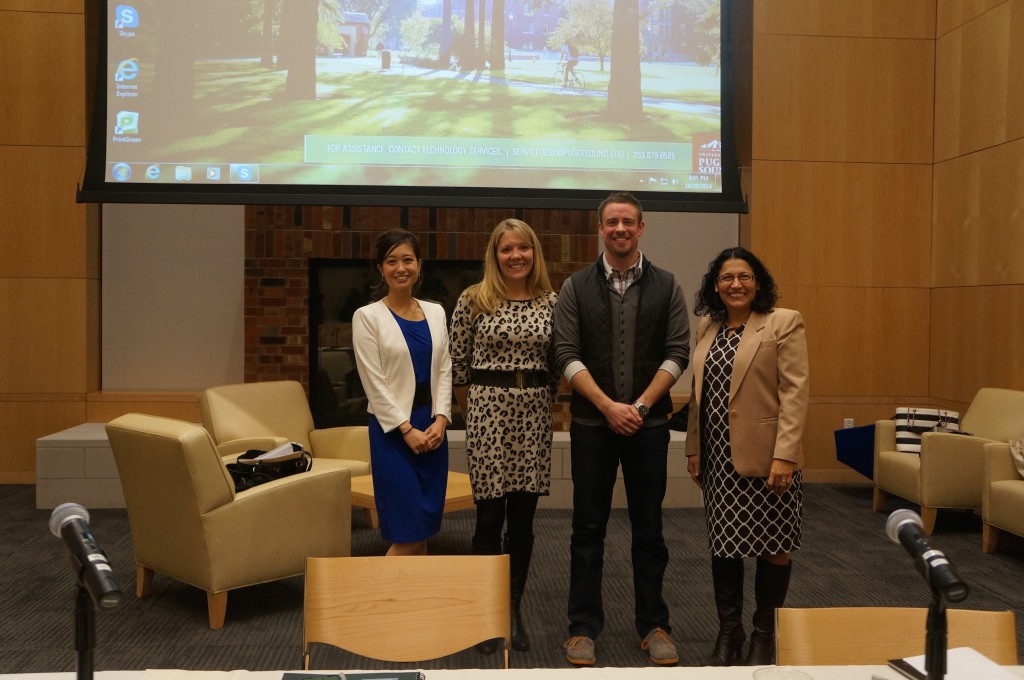

On Tuesday October 28, a panel of four business professionals ranging in background discussed questions on innovation and creativity. The panel created and moderated by Nila Wiese Director of the Business Leadership Program and Professor chose innovation because of its increasing importance in organizations.
“My goal was for students to walk away from the panel understanding that organizations are always seeking creative talent; that we can all develop the skills necessary to be ‘innovators’, and that organizations can and should create the right conditions for innovative thinking to flourish,” Wiese said. “I also wanted students to understand that innovation/innovative thinking has to be responsive to performance metrics and has to result in something of value to stakeholders.”
The panel included Susie Vowinkel the Head of Industry for Travel Vertical at Google, David Watson ’92 and Managing Partner of MonkeyPad Enterprises LLC (who was Skyping in from California), Jenny Lai a Business Leadership Program graduate of ’05 and Talent Management Specialist at Boeing and Eric Åppeslånd a Manager at Hitachi Consulting.
The diverse panelists in age, gender and careers provided students with the opportunity to learn about creativity within a variety of organizations. Additionally, it allowed students to grapple with their own personal ideas on innovation and creativity in the work place.
First off, what is innovation?
“There are three levels of innovation. The first is incremental innovation, which is the evolution of day-to-day processes. The second is incremental side effects, which is an idea that leads to innovative results. Lastly transformational innovation, such as Google’s Driverless car,” Vowinkel said.
Voweinkel explained innovation as a spectrum with one end demonstrating how innovation can affect one person or one company and then at the other end innovation as something that affects the entire world.
Another way of looking at innovation is having the courage to take a risk.
“Innovation occurs when someone is at the edge of a plateau and they are bringing people who are in the middle (safe) to the edge,” Watson said.
This led into a discussion of whether innovators are born or made. They wondered if it is possible train someone to be innovative or if companyies have to hire individuals who are already innovative.
The panelists all agreed that everyone could be innovative but that innovation comes in different forms and it is encouraged in different ways.
“As we grow up our ideas get shot down which results in a loss of confidence. But we cannot be afraid of making mistakes or receiving negative feedback,” Lai said.
When people put themselves out there creatively there is always a sense of vulnerability, which scares people from using their creative muscles. However, as a society, workplace or school we should be eliminating this fear and nurturing innovation.
“I’ve seen people become innovative through encouragement, by being observant and by asking a lot of questions” Åppeslånd said.
The next question focused on how organizations can nurture or attract innovation. What type of environment will create the most innovation?
“Start by thinking ‘how we can make the world a better place’? That type of thinking creates an environment for creativity. Encourage people to do things differently” Vowinkel said.
Leaders have a large influence on creating the right environment for creativity to flourish because followers look up to them for direction.
“Be a role model. Leaders need to demonstrate creativity,” Lai said.
As a manager Åppeslånd plants a seed in his team and lets them run with it.
“It provides the team freedom to run with [an idea] as they will. It allows them to have ownership over a project, which in turn creates passion and lasting creativity” Åppeslånd said.
The next question was regarding collaboration the benefits and challenges that it presents for innovation to occur.
At Google collaboration is key to the company’s success and the founders, Larry Page and Sergey Brin, know this.
“Food is everywhere. Larry and Sergey believed that having people talk and discuss topics over a meal or in the lunch lines would create an environment that promotes collaboration leading to innovation,” Vowinkel said.
Both Lai and Watson discussed the challenges such as the unending ideas that come are produced from collaborations or miscommunication
“Collaborating with so many people is like playing a game of telephone. Ideas get lost in the mix,” Lai said.
The panelists touched on a variety of interesting points but the end point was the same: creativity and innovation are necessary within the workplace. Especially since we face challenges such as global warming and cancer, innovation and creativity will take center stage as we seek solutions. Promoting those two qualities in schools, in the workplace and society need to become priorities in order for society to continue to progress one step at a time.
TED Talk- Tips on how to improve your creative confidence: http://www.ted.com/talks/david_kelley_how_to_build_your_creative_confidence

